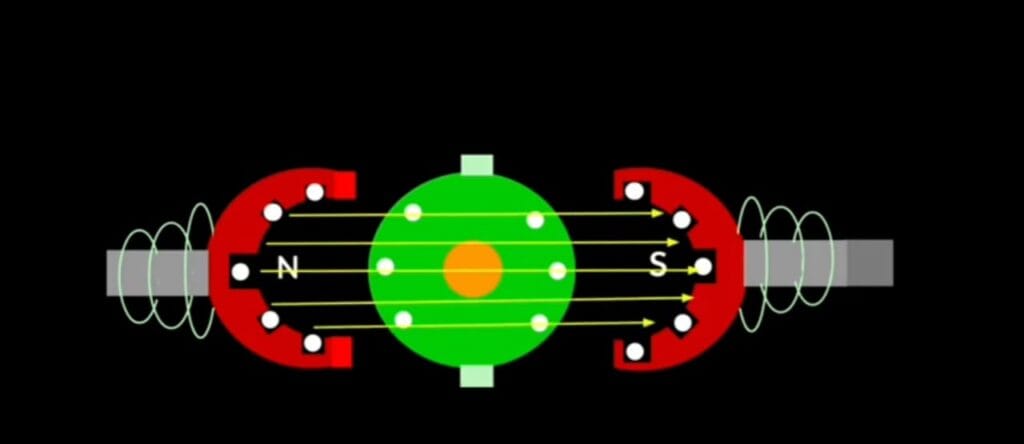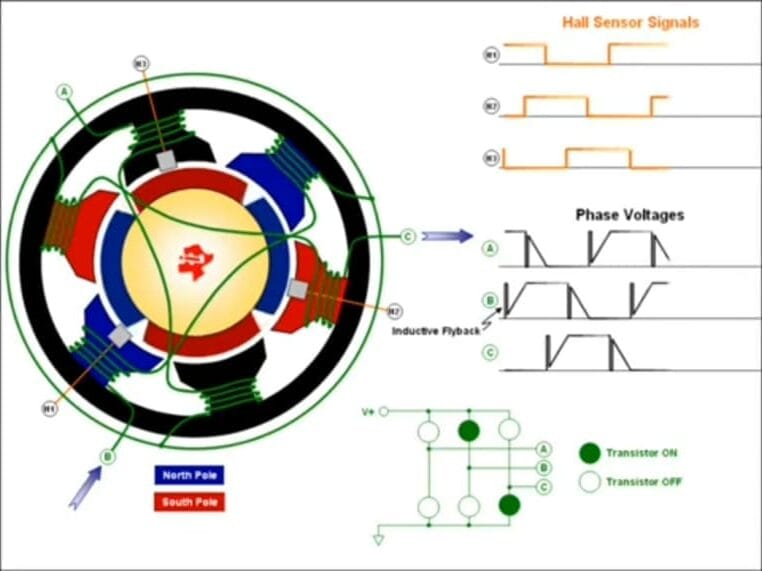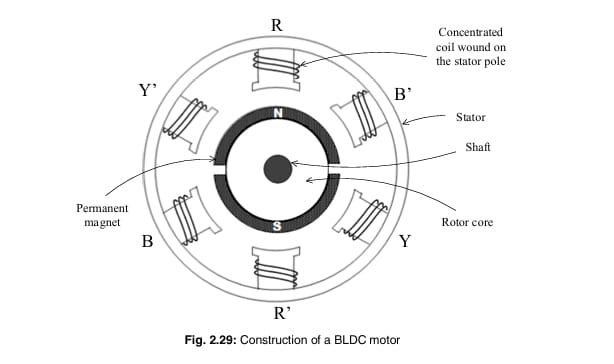Table of Contents
What Is Speed Regulation?
Think about riding a bicycle. When you’re going downhill with no backpack, it’s super fast and smooth. But going uphill with a heavy bag? How to calculate the speed regulation of DC motors?
DC motors act the same way. When there’s no load, they run fast. When there’s a heavy load, they slow down a bit. Speed regulation tells us how much the motor’s speed changes when it’s doing harder work.
A motor with good speed regulation doesn’t slow down a lot. That means it’s running almost as fast under load as it does when running free.
Speed regulation of a DC motor refers to the motor’s ability to maintain a constant speed under varying load conditions. It is an important characteristic that determines how much the speed of the motor changes from no-load to full-load. A good motor should have minimum speed variation with a change in load.

Calculate the speed regulation of DC motors
Here’s a simple way to figure it out:
Speed Regulation (%) =
(No-load Speed − Full-load Speed) ÷ Full-load Speed × 100
Let’s go through a quick example:
- When the motor isn’t doing any work (no-load), it spins at 1500 RPM.
- When it’s working hard (full-load), it spins at 1480 RPM.
Now, plug those numbers into the formula:
Speed Regulation = (1500 − 1480) ÷ 1480 × 100 = 1.35%
That means the motor only slows down by 1.35% when it has a heavy load. That’s good!
speed regulation of DC motors
Let’s explore how the speed of a DC motor works, and how we can understand something called speed regulation.
What Is Speed in a DC Motor?
Speed means how fast the motor spins. This is measured in RPM (revolutions per minute). To find this speed, we use a special formula based on something called EMF—short for Electromotive Force.
📘 EMF Equation:
E=P×ϕ×Z×N / 60×A
Let’s break it down:
- E = Back EMF (a kind of electric pressure)
- P = Number of poles in the motor
- φ (phi) = Magnetic strength from each pole
- Z = Number of wires inside the motor
- N = Speed of the motor (RPM)
- A = Number of paths the current can take
Now, let’s rearrange this equation to find the motor speed N:
N=60×A×E / P×ϕ×Z
This tells us:
- The more EMF we have, the faster the motor spins.
- The stronger the magnetic field, the slower the motor will go.
In short: More electric pressure = more speed. Stronger magnets = less speed.
🔄 What is Speed Regulation?
Speed regulation tells us how much the motor’s speed changes when we add a load (when the motor starts doing work).
Speed Regulation=Nnl−Nfl / Nfl×100%
Where:
- Nnl = No-load speed (motor running freely)
- Nfl = Full-load speed (motor doing work)
A motor with low speed regulation means it keeps spinning at nearly the same speed—even when it’s working hard. That’s a sign of a high-quality motor!

Types of Speed Regulation:
- Good or Low Speed Regulation: When the percentage change in speed is small, the motor maintains nearly constant speed.
- Poor or High Speed Regulation: When the speed changes significantly with load, the motor has poor regulation.
Why Is Speed Regulation Important?
- ✅ Steady performance: Machines and tools work more smoothly without speed drops, which keeps the quality consistent.
- ✅ Smoother movement: No sudden starts or stops. Everything flows better.
- ✅ Longer life: When motors run evenly, they don’t wear out as fast. That means fewer repairs and more savings.

Speed Regulation in Different DC Motors
| Type of DC Motor | Speed Regulations % | What It Means |
| Shunt Motor | Less than 10% | Very steady. Almost no slowdown. |
| PMDC Motor | 10% to 15% | Slight slowdown, but still good. |
| Series Motor | Over 40% | Big speed drop. Not good for steady jobs. |
| Cumulative Compound | Around 25% | Medium drop. Good for strong pulling jobs. |
| Differential Compound | 2% to 5% | Super steady. Best for consistent performance. |
Speed Regulations vs. Speed Control
Let’s understand the difference with a simple example:
Imagine you’re riding a bike. When you go uphill, you naturally slow down even if you don’t touch the brakes. That’s like speed regulation—it shows how much your speed changes without you trying.
Now, let’s say you want to slow down or speed up on purpose. You press the brakes or pedal harder. That’s like speed control—you’re choosing to change your speed using tools or techniques.
So in motors:
- Speed regulation = Natural slowdown when the motor is working harder.
- Speed control =Alter the motor’s speed intentionally by employing various techniques.
🔧 How We Control DC Motor Speed
1. Changing the Voltage (Armature Control)
This is the simplest way. When we lower the voltage, the motor slows down. It’s great for when you only need lower speeds and want an easy fix.
2. Changing the Magnetic Field (Field Control)
Here, we weaken the magnetic field inside the motor. That makes the motor run faster. It’s like giving the motor a boost!
3. Ward-Leonard Method
This one’s a bit fancy. It uses another motor to help control the speed very precisely. It works well, but it’s more expensive and takes up a lot of room. That’s why it’s mostly used in special machines that need exact speeds.
Applications:
- DC shunt motors have good speed regulation and are used in applications requiring constant speed.
- DC series motors have poor speed regulation and are used where variable speed is acceptable, such as in traction systems.
🏑 Final Thoughts
- A motor with low speed regulation handles heavy loads really well.
- Shunt and differential compound motors are great when you need steady speed.
- Knowing this helps you choose the right motor for robots, factory machines, or even electric cars!
FAQ
What is speed regulation in DC motors?
Speed regulation refers to how much the speed of a DC motor changes when the load varies from no-load to full-load. It tells us how well a motor can maintain a constant speed under different load conditions.
Why is speed regulation important?
It’s important because:
It shows how stable a motor’s speed is.
In applications like elevators, cranes, and paper mills, consistent speed is crucial.
Poor regulation can lead to performance issues and mechanical wear.Which DC motor has the worst speed regulation?
Series DC motors have poor speed regulation. Their speed drops significantly as the load increases.
What is considered good speed regulation?
If the speed regulation is less than 10%, it is generally considered good. A smaller percentage means better speed stability.
